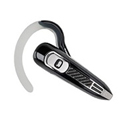
| CONNECTIONS |
IDAHO
ITD
HOME
511 TRAVEL SERVICES
IDAHO
DMV
ITD
NEWS
HIGHWAY
SAFETY
IDAHO STATE POLICE
STATE OF IDAHO
NIATT
NATIONAL
AASHTO
AAMVA
AAA of IDAHO
FEDERAL HIGHWAYS
FEDERAL AVIATION
IDAHO STATE POLICE
NHTSA
NTSB
TRB
U.S. DOT
TRANSPORTER
Archives
Milestones
Comments
Idaho
Transportation
Department
Office of Communications
P.O. Box 7129
Boise, ID 83707
208.334.8005
Fax: 208.334.8563

States take varied approaches
to use of cell phone while driving
While Idaho drivers have unrestricted use of cell phones when behind the wheel, the times are changing elsewhere in the United States as more states – and some local jurisdictions – place tougher limits on hands-on use of phones.
ITD employees who travel to nearby states should be aware of restrictions outside of Idaho.
Effective Tuesday (July1) all drivers in California must use a hands-free headset that allows dialing, receiving and talking on cell phones without direct contact with the phone. Drivers younger than 18 are prohibited from using cell phones while driving, as are young drivers in Washington.
 Drivers younger than 18 who have a learner’s permit or provisional license are prohibited from using cell phones in Oregon where it is considered a secondary offense.
Drivers younger than 18 who have a learner’s permit or provisional license are prohibited from using cell phones in Oregon where it is considered a secondary offense.
Utah does not ban cell phone use while driving but has a law specifically covering distracted driving. It defines as a moving violation (other than speeding) driving while distracted by the use of handheld cell phone or other activities not related to driving.
Like Idaho, Wyoming and Montana do not restrict the use of cell phones while driving.
Studies show mixed results on the influence of cell phone use on highway safety. Some research indicates the use of cell phones is no more hazardous than other distractions drivers submit themselves to, such as eating, grooming and using technology (including CD players, MP3 players, GPS devices, etc.)
The greatest danger in using cell phones while driving may not be related to the physical contact with phones but to the distraction drivers face in carrying on a conversation. According to USA Today, researchers still are investigating precise brain functions of cell phone-chatting drivers. Early evidence suggests the problem is “cognitive distraction from the conversation…"
“A driver and a passenger who are having a conversation can both see the road. The conversation likely will stop if something unexpected happens. But if a driver is having a conversation over a cell phone, the person at the other end of the line can’t see the road – so he or she keeps talking when something dangerous occurs. That prevents the driver from completely focusing,” according to Anne McCartt of the Insurance Institute for Highway Safety.
 Using a hands-free set apparently does not appreciably improve safety while using a cell phone. Studies have shown that drivers using headsets are just as distracted. “We think it’s best for states not to pass more legislation,” says Jonathan Adkins of the Governors Highway Safety Association.
Using a hands-free set apparently does not appreciably improve safety while using a cell phone. Studies have shown that drivers using headsets are just as distracted. “We think it’s best for states not to pass more legislation,” says Jonathan Adkins of the Governors Highway Safety Association.
“Let’s focus on the research and the data. We need a good highway (cell phone) safety law, and we don’t have that yet.”
For more information, see the full USA Today report at: http://www.usatoday.com/tech/wireless/phones/2008-06-24-cellphone-car-driving-headset_N.htm
Also see a state-by-state list of cell phone restrictions on the Governors Highway Safety Association Web site: http://www.ghsa.org/html/stateinfo/laws/cellphone_laws.html
Published 7-4-8